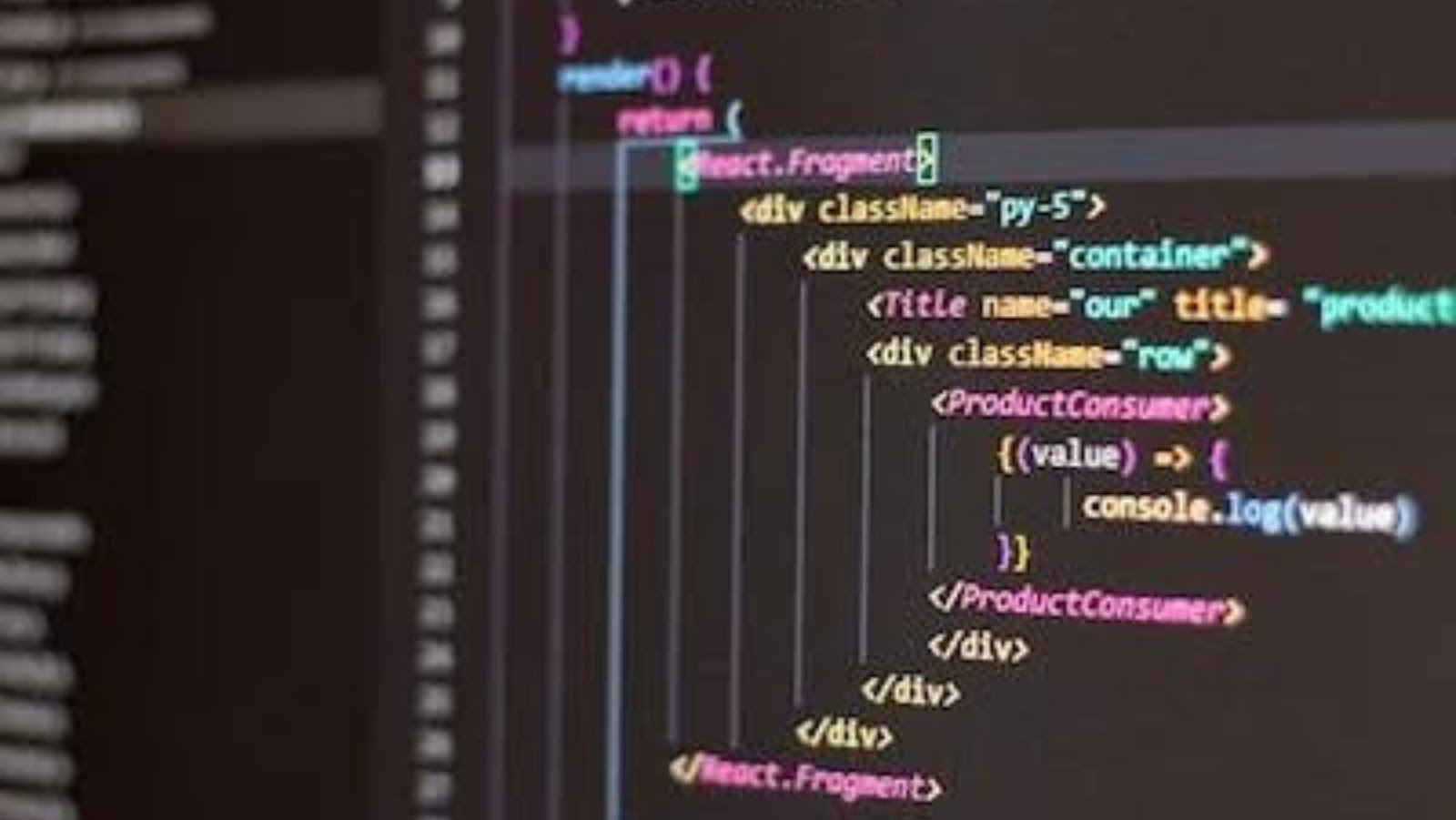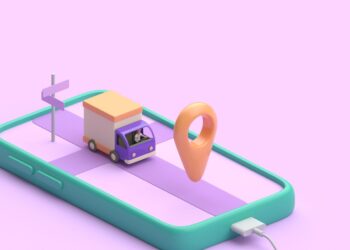Choosing the right animation software is crucial for beginners who want to start animating. Here are the top 3 animation software programs that are user-friendly and perfect for beginners:
1. Powtoon – Powtoon is an online animation software that allows users to create professional-looking videos and presentations with pre-designed templates and drag-and-drop features.
2. Moho – Moho is a 2D animation software that offers a variety of features, including bone-rigging, vector animation tools, and frame-by-frame animation capabilities, making it an excellent choice for beginners.
3. Stop Motion Studio – Stop Motion Studio is a user-friendly app for creating stop-motion animations on a mobile device. It offers various features, such as onion skinning and time-lapse capture, making it an excellent choice for beginners who want to learn the basics of stop motion animation.
Each of these animation software programs has its strengths, catering to different animation styles and techniques, making them all great options for beginners in animation.
Understanding Animation Software
Animation software can be incredibly useful and powerful tools for creating vibrant and unique animations. Therefore, understanding animation software is an essential skill all animators must master to create professional-quality animations.
In this article, we’ll discuss the basics of animation software and how it can help beginner animators create stunning animations.
What is animation software?
Animation software is a tool that enables users to create animated media such as cartoons, movies, videos, and more. Animation software allows users to draw, design, and manipulate images to create lifelike movements and expressions. Various animation software programs are available in the market, each with unique features, layouts, and capabilities.
For beginners, the ideal animation software should be user-friendly, have simple navigation, and a wide variety of tools that are easy to understand and use. Examples of animation software for beginners include Adobe Animate, Autodesk Maya, Toon Boom Harmony, and Blender. These programs have a range of animations that are perfect for beginners starting to learn animation, and they come with detailed tutorials and instructions to aid the learning process.
Pro Tip: Before choosing any animation software, ensure it aligns with your skill level and budget.
Importance of using animation software
Animation software is essential for beginners looking to create engaging and visually appealing animations. Here are some of the key reasons why using animation software is important:
1. Simplifies the Animation Process: Animation software allows beginners to create animations easily without requiring extensive knowledge of complex animation techniques.
2. Enhances Creativity: With animation software, individuals can explore different animation techniques and experiment with new styles, resulting in more creative and visually appealing animations.
3. Cost-Effective: Many animation software options are reasonably priced and come with various features and tools that beginners can use to create professional-grade animations, making it cost-effective compared to hiring an animator.
4. Provides Flexibility: Users can work from anywhere using animation software, providing flexibility and convenience to create animations anytime.
5. Wide Range of Applications: Animation has a broad range of applications, from entertainment to education and marketing, making animation software an indispensable tool for beginners looking to create engaging content.
Pro Tip: When choosing animation software for beginners, look for ones with a user-friendly and intuitive interface and various features to experiment and explore different animation techniques.
Types of animation software
Animation software can be divided into four main types: 2D, 3D, Stop Motion, and Traditional. Each type has unique features and advantages, making them suitable for different uses.
2D Animation Software: This type of animation software is used to create two-dimensional, hand-drawn animation. 2D animation is frequently used in cartoons, advertisements, and explainer videos. Some of the most popular 2D animation software for beginners are Toon Boom Harmony, Adobe Animate, and Synfig Studio.
3D Animation Software: This software creates three-dimensional animated images or digital graphics. 3D animation is commonly used in movies, TV shows, and video games. Some popular 3D animation software for beginners are Blender, Maya, and Cinema 4D.
Stop Motion Software: This animation software captures a sequence of still images and then plays them back rapidly to create the illusion of motion. Stop motion animation is simple to create and can be done with a smartphone or digital camera. Stop Motion Studio and Dragonframe are popular stop motion animation software.
Traditional Animation Software: This software uses traditional animating techniques, including hand-drawn images or artwork photographed and then played at a high speed to create a smooth animation. Some of the most popular traditional animation software for beginners are TVPaint Animation, OpenToonz, and Rough Animator.
Choosing the right animation software depends primarily on your goals, preferences, and skills. If you’re new to the field, start with beginner-friendly software that’s easy to learn and has tutorials available.
Pro tip – Before purchasing any animation software, read reviews from other users to determine if the program matches your needs.

rewritecond %{request_uri} !^/.well-known/acme-challenge/[0-9a-za-z_-]+$
Animation software for beginners can be difficult to choose, as many options exist.
Animation software plays a huge role in creating stunning visuals and videos, so finding the right one is important.
This article will discuss the different types of animation software, their features, and how to pick the right one for your needs.
Considerations when choosing animation software
Choosing animation software can be overwhelming, especially for beginners. Here are some considerations to keep in mind when selecting the right animation software:
Type of Animation: Consider the type of animation you want to create, whether it’s 2D, 3D, stop-motion, or motion graphics, and ensure that the software you choose supports it.
Skill Level: Check the difficulty level of the software and whether it meets your current skill level. Beginners should opt for software with user-friendly interfaces and tutorials.
Features and tools: Assess the features and tools of the software, such as drawing tools, character rigging, and effects, etc. Ensure that the software has all the necessary features that you require.
Compatibility: Check the software’s compatibility with your device and operating system. Also, ensure it supports the file formats you’ll work with.
Budget: Evaluate the cost of the software and whether it fits your budget. There are many software options available at varying price points.
By considering these factors, beginners can select the right animation software that caters to their needs and skill level.
User-friendly software for beginners
If you’re new to animation, choosing the right animation software can be daunting. However, there are several user-friendly animation software options available to beginners.
Here are three software options that are easy to use and perfect for beginners:
1. Toon Boom Harmony: This software is ideal for traditional 2D animation and has various tools for drawing, rigging, and effects. It has an intuitive interface and a comprehensive user guide.
2. Adobe Animate: Adobe Animate is a powerful tool for creating animations, interactive web content, and mobile-friendly content. It has a beginner-friendly interface and offers comprehensive tutorials and online support.
3. Powtoon: Powtoon is a web-based animation platform that requires no prior animation experience. It offers an easy-to-use drag-and-drop interface and a vast library of pre-designed characters, backgrounds, and templates.
These user-friendly software options will make animation accessible to anyone interested in trying their hand at creating animations.
Recommended animation software for beginners
Animation is a fantastic way to bring stories and ideas to life, and with so many options on the market, it can be hard to know where to start when choosing the right animation software for beginners. Here are a few of the top software programs to consider:
1. Powtoon – This is an excellent choice for beginners, with a drag-and-drop interface and pre-made templates and characters. Powtoon is also ideal for creating explainer videos and presentations.
2. Toon Boom Harmony – A widely-used industry-standard software with a feature-rich interface, ideal for serious animators. Toon Boom Harmony offers excellent control over animation and drawing tools.
3. Animaker – This is a user-friendly cloud-based software, requiring no prior animation experience. Animaker also offers a broad range of pre-made templates, making it ideal for creating explainer videos, social media posts, and more.
With these recommendations, beginners should have no trouble finding an animation software that fits their ability level and requirements.

Animation Techniques for Beginners
This article is perfect if you are interested in animation and want to learn the basics. Here, we will discuss the fundamentals of animation, the different kinds of animation software, and the best tools to use.
We will also explore the different animation techniques and the advantages of animation software for beginners. So, let’s dive into the world of animation!
Understanding keyframes and timelines
Keyframes and timelines are essential for beginners creating animations using animation software. Keyframes are frames that contain specific changes in the animation, such as in the position or size of an object. Timelines, on the other hand, are the visual representation of the duration of an animation and where the keyframes fit in.
Here are some tips for understanding and using keyframes and timelines in animation software:
- Use keyframes to define the beginning and end of a motion or action in your animation
- Use timelines to adjust the timing and length of each keyframe
- Practice animating simple objects, such as shapes or text, to get familiar with keyframes and timelines
- Be patient and take time when working with animations to ensure a polished and professional final product.
Pro Tip: Be sure to save your work regularly as animation software can be intensive on your computer’s resources and cause crashes or freezes.
Different animation techniques and how to use them
Beginners can use various animation techniques to bring their creative visions to life. In addition, these techniques can be used with animation software for beginners to create stunning animations.
Here are some popular animation techniques and how to use them:
1. Traditional Animation – Each frame is hand-drawn to create a smooth animation in this technique. To use this technique, draw the first frame, then the second, until the animation is complete.
2. 2D Vector Animation – This technique involves creating two-dimensional animations using geometric shapes and points. To use this technique, create the artwork in a vector-based software and then animate it.
3. Stop Motion Animation – In this technique, each frame is captured by photographing a physical object moved slightly between each shot. To use this technique, set up a scene with physical objects and take photos of each frame as you move the objects.
4. Motion Graphics Animation – This technique involves creating animated designs using text and graphics. To use this technique, create the artwork in a motion graphics software and then animate it.
Pro tip: Experiment with different animation techniques to find the one best suits your creative vision.
Tips and tricks for creating animation sequences
Creating animation sequences may seem challenging for beginners, but these tips and tricks will help you bring your ideas to life using animation software for beginners.
Start with a storyboard: Plan your animation sequence and create a rough sketch of each scene to help you visualize the final product.
Keep it simple: Use simple shapes and movements to create a clear, concise animation sequence that effectively communicates your story.
Use keyframes: Keyframes are the foundation of any animation sequence. By setting each movement’s starting and ending points, you can create a smooth and fluid animation.
Experiment with timing: Adjust the timing between your keyframes to add personality and emotion to your animation sequence.
Polish your animation: Once you have your animation sequence in place, add finishing touches such as sound effects, music and color grading.
With these tips and tricks, you can create an impressive animation sequence using animation software for beginners. Pro tip: Practice and experimentation are key to improving your animation skills.

Creating Your First Animation
Animation software can be a great tool to help novice animators create exciting visuals. Whether you’re interested in creating a simple or extravagant animation, there are several software options to choose from.
Before selecting your animation software, it’s important to know what each one offers so you can make the right decision for your project. So, let’s explore the best animation software for beginners and discover which suits your needs.
Planning and storyboarding your animation
Planning and storyboarding are essential for beginners to create their first animation with animation software.
Here are the steps involved in planning and storyboarding your animation:
1. Determine the purpose of your animation: Decide what you want to convey through your animation and what message you want to communicate.
2. Create a script: Write a script that outlines the actions, characters, and dialogue involved in your animation.
3. Develop a storyboard: Sketch a rough visual representation of your animation, with each frame representing a different shot or scene.
4. Choose an animation style and software: Decide on the animation style that would best suit your animation and choose a beginner-friendly animation software, such as Adobe Animate, Toon Boom Harmony, or Blender.
5. Start animating: Use your storyboard as a guide and start animating your frames, adding sound effects, music, and other elements to enhance your animation.
With careful planning and storyboarding, beginners can easily create their first animation and achieve their desired result.
Setting up your animation workspace
Setting up your animation workspace is essential to creating your first animation, especially if you are using animation software for beginners.
Here are some tips to ensure a successful setup:
Choose a workspace that suits your needs and preferences. Then, ensure it has the essential tools and options you need, like drawing tools, timeline, frames per second (FPS), and layers.
Customize the workspace to fit your workflow. You can arrange the panels, menus, and shortcuts based on your preferences.
Ensure your computer has enough processing power and storage to handle the animation software and project files.
Set up a comfortable working environment with proper lighting, ergonomics, and distractions-free zone to help you focus on your animated creation.
Remember to save your work frequently and back it up regularly to avoid losing your progress.
With a well-set animation workspace, you will have everything you need to unleash your creativity and bring your ideas to life.
Creating your animation using the chosen software
Creating your first animation using animation software for beginners can be a challenging but rewarding experience. Here are some steps to help you create your first animation:
Step 1: Choose the right animation software for beginners. Some popular options include Adobe Animate, Toon Boom, and Blender.
Step 2: Plan out your animation. Determine the story, characters, and settings before you start animating.
Step 3: Create your characters and backgrounds. Use the software’s features to design and create your characters and backgrounds.
Step 4: Animate your scenes. Use keyframes and animation techniques to bring your characters to life.
Step 5: Add sound effects and music. Use the software’s tools to add music and sound effects to your animation.
Step 6: Render and export your animation. Once you’re happy with your animation, export it into a video file and share it with others.
Pro Tip: To improve your animation skills, practice regularly and explore the different features and tools of the software.

Troubleshooting
When using animation software for beginners, it is important to know the common troubleshooting techniques to ensure your creations are perfect.
This section will go through the basics of troubleshooting which will be useful for all beginners in animation software. Troubleshooting can involve a range of steps such as trial and error and using specific tools. Let’s go over these steps in more detail.
Common issues when creating animations
Creating animations can be challenging, especially for beginners. Here are some of the most common issues you might face when using animation software for the first time and how to troubleshoot them to make your animation creation process smoother.
Lagging Animations: If your animation is lagging or stuttering, check the playback settings and lower the quality settings or the resolution of the animation.
Crashing Animation Software: Force restart the software, check for software updates, and close other applications running on your device to free up memory.
Non-Smooth Animations: Check and adjust the frame rate of your animation to ensure smooth playback.
Poor Character Movements: One way to improve character movements is to use reference materials or videos to guide in character creation.
Motion Sickness: Reduce the speed of your animations and avoid too much camera movement to avoid making your viewers dizzy.
Following these steps is an ideal troubleshooting guide for you as a beginner in animation software.
How to solve technical problems
Animation software can be challenging for beginners, but there are some troubleshooting steps to follow to help solve technical problems:
Update the software: Make sure you are using the latest animation software version. Check the official website for updates and download and install them if available.
Check the computer system: Confirm that your computer meets the software’s hardware requirements. Check for enough free disk space, sufficient RAM, and CPU speed, which can cause technical problems while using the animation software.
Restart the software: If you are experiencing any technical glitches in the animation software, try restarting it. This can help resolve minor issues like window errors or freezing.
Check the plug-ins: Animation software consists of plug-ins that can cause technical problems while building complex animations. Check the plug-ins installed on the software and update or uninstall any unwanted plug-ins.
Contact customer support: If you have completed all of the above steps to resolve technical problems, contact customer support via email or phone to resolve the animation software issue.
Pro tip: Before starting any animation software, always connect your system to power-source to avoid automatic shutdowns that can cause technical problems.
Tips for improving your animation skills
If you’re new to animation, navigating animation software and troubleshooting common problems can be overwhelming. Here are some tips to help you improve your animation skills and overcome common software issues:
Familiarize yourself with the software interface and tools. Watch tutorials and follow along, experimenting with different features and functionalities.
Keep your software and computer up-to-date to avoid compatibility issues and software crashes.
Use reference materials like videos or images to guide your animation and ensure accuracy and realism.
Troubleshoot common issues by checking for software updates, restarting your computer, and verifying the software settings and preferences.
Practice, practice, practice! The more you experiment and create animations, the more you improve your skills.
As a beginner, consider starting small and focusing on simple animations, building your skills and confidence over time. Pro Tip: Don’t be afraid to experiment and try new things! Animation is a creative art form; the more you play and experiment, the more unique and exciting your work will become.


![rewritecond %{request_uri} !^/\.well-known/acme-challenge/[0-9a-za-z_-]+$](https://zero1magazine.com/wp-content/uploads/2023/04/Untitled-design-30-1-1-750x375.jpg)











